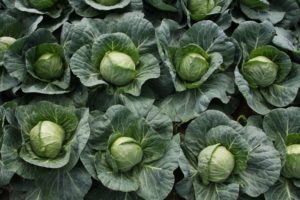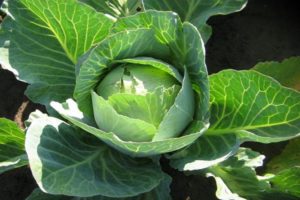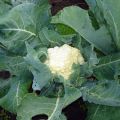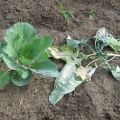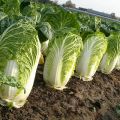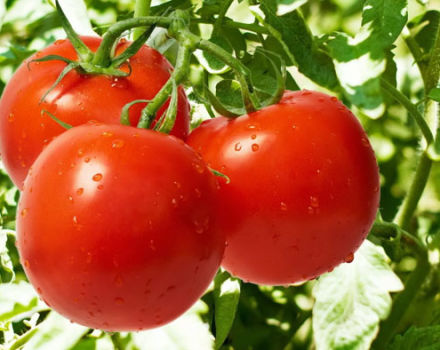The most effective methods of how to deal with keel on cabbage
Keela cabbage is an insidious disease caused by a fungus. Cabbage is a very common vegetable crop. Her plantations can be found in almost every garden plot. This vegetable is healthy and delicious, but it's not easy to grow. It is quite difficult even for an experienced gardener to protect cabbage from keels and attacks of pests, to comply with the rules of cultivation. It is almost impossible to get rid of this disease.
What is keela
Kiel is subject to all cabbage varieties and cabbage crops: turnips, radishes, lettuce. Its fungal nature makes it impossible to cure the plant. The part of the infected plant, located above the surface of the earth, looks depressed: the leaves become lethargic, begin to curl. This happens even if the soil is well moistened.
If a keel appears, you need to pay attention to the root. If the disease has formed, then you can see the rhizome completely covered with growths, which turns into branches that look unpleasant, even ugly. Real roots die pretty quickly, and the plant ceases to exist.
But this is not the worst thing. Since keela is a fungal disease, its spores, multiplying, quickly fill the entire area, affecting other crops. Everything that the gardener grows in the garden is under threat of destruction. Therefore, the earlier the protection is organized, the more soil will be saved.
In addition to cabbage, other crops can also get sick:
- radish;
- swede;
- mustard;
- watercress;
- daikon.
If a keel appeared on cabbage, then not all gardeners know how to fight. Symptoms are difficult to detect early on.
When the plant begins to show the soreness of its state, it is no longer possible to restore its strength and health, but everything that is nearby can be saved. To do this, you need to know how to deal with keel on cabbage.
How does the disease manifest
Before getting rid of infected plants, you need to get accurate confidence in the reliability of the symptoms. The first sign by which you can identify the keel is withering leaves. With full confidence that this phenomenon was not discovered due to dry soil, it is necessary to dig up the future head of cabbage and carefully examine the roots of the plant. If they have bulging sores, then this is a cabbage keel, which can infect the roots of other plants.

Symptoms that form on the roots literally drown the plant. Small roots, due to which the vegetable is nourished, lose the ability to grow. The development of cabbage stops. Soon the growth of growths becomes so active that the head of cabbage dies.
All plants diagnosed with cabbage disease should not only be removed, but also destroyed. It is not difficult to free the land: the roots of the plant die off, the connection with the soil is lost, the cabbage is easily pulled out.
It should be noted that the growths on the roots of a cabbage head can reach the size of a fist, and then begin to rot. So a cyst forms in the ground, which spreads and infects healthy plants.
If the disease is not prevented, then the defeat of fungal spores can re-manifest itself within five subsequent years.
The defeat of a cabbage head with keel can occur at almost any stage of its development. Young seedlings, whose growth is active and fast, are more susceptible to disease. The acceleration of the development of the disease can be affected by the increased acidity of the soil.
Outwardly, the keel on cabbage manifests itself as wilting leaves. Slow development indicates a problem with the plant. At first, cabbage leaves have a light purple hue, which changes over time to yellow. If you do not take measures to save the harvest, then after a short period of time all the plants will dry out, and the spores will continue to spread underground.
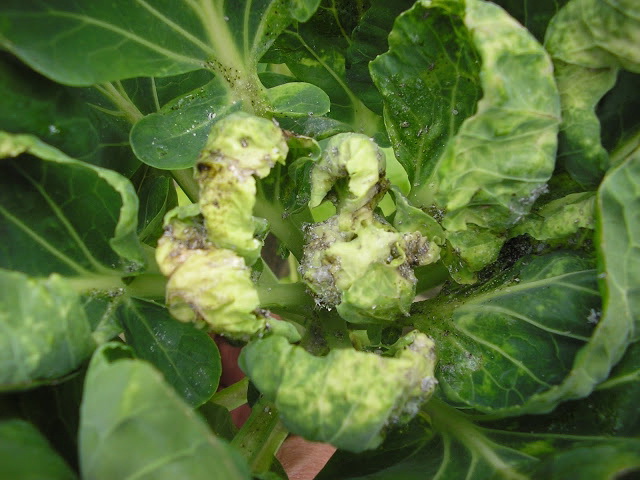
Spores that are dormant in winter tolerate cold well. As soon as the weather conditions are favorable, they begin to grow. Zoospores are formed, which enter the plant through root hairs. Growing to an impressive size, the mounds block the development of the plant, which is why the high-quality flow of moisture stops and prevents the receipt of nutrients.
Cause of keel infection
The risk of a keel appearing in the garden arises most often when cabbage seedlings are bought in unverified places. By working for the sake of profit, unscrupulous sellers save money on tillage and seedlings. As a result, you can easily bring the keel into your garden, and getting rid of it will be very problematic, especially not knowing what to do in this case.
Spores of the fungus Plasmodiophora brassicae live in the ground for at least 5 years. This is a parasite that is skillfully disguised at first. So, at an early stage of development, the sores are very small, and it is difficult to distinguish them with the naked eye from real roots.
In the process of growth, the growth increases in size, begins to replace the roots of the plant. In a ripe state, spores are also dangerous because they remain in the ground for a long time. Any cruciferous plant can cause fungal spores to grow, even if it is a simple weed.
Control methods
Methods on how to deal with keel on cabbage roots will be ineffective in the later stages of the development of the disease. In this case, you can try only one method: to promote the development of adventitious roots. For this, the head of cabbage must be hilled high and systematically watered.
Before you dig up the ground at the end of autumn, you can dust the soil with lime. However, the most effective way to avoid re-infestation with the keel is to avoid planting crucifers in this area of the garden.
Of course, damaged parts of cabbage roots should not be stored on site. It is best to burn them. Since it is almost impossible to cure an infected plant, certain actions can be taken to make the soil safe for plantings that will appear on the site next year.
Seed treatment
Before placing seeds in the ground, they need to be processed, knowing how to heal. This can be done in several ways:
- placement in an immunostimulant;
- hot water treatment for 20 minutes;
- exposure for 6 hours in a mustard solution, the concentration of which is 1.5%;
- placing in a solution of ascorbic acid, it is necessary to process seeds for 16 hours;
- cooling during the day, the ideal place for this manipulation is a refrigerator, the temperature in which is not higher than 2 aboutFROM.
This method, of course, is not a panacea, because the disease of keela cabbage can get on the garden plot with seedlings. But if the infection is hiding in cabbage seeds, it can be eliminated using the above-described planting treatment methods.
Soil treatment
If the area was once affected by a keel, the soil must be cured. First of all, it is recommended to grow plants in this area that kill keel spores on cabbage: tomatoes, potatoes, onions and garlic, beets. These crops can handle them in 2-3 years.
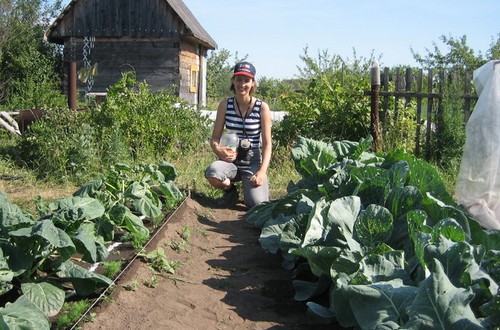
In one season, fungal spores can destroy plant combinations such as tomatoes and spring garlic. There are crops that, on the contrary, should be avoided when there is a danger of injury: you need to pay attention to the emerging weeds. Narrow beds can well stop the development of the disease: this technology helps to prevent the primary lesion when growing cabbage.
It is recommended to pay attention to the possibility of mixing clean and contaminated soil. This must be prevented. Prevention carried out will reduce the likelihood of spreading the disease so that the cured land will produce a good harvest.
Agrotechnical methods
The options for dealing with keel on cabbage may be different, but you cannot do without using agricultural techniques. It is imperative to monitor the replenishment of the deficiency of potassium and calcium components in the soil, to prevent the lack of zinc, chlorine, boron. The humus content can be increased up to 2.5 times compared to the usual one. Will not harm plants and saltpeter.
Keela is very cunning. When fighting it, you should not ignore the issues associated with watering. It must be carried out very competently: waterlogging of the soil can adversely affect it, as well as overdrying.
Traditional methods
The really effective ones for keel on cabbage are those that combine different measures. Traditional drugs should not be disregarded either.
Experienced gardeners call the most popular ways to process cabbage:
- treatment with Bordeaux liquid - this tool effectively eliminates soil problems;
- adding a small amount of wood ash to the hole - then water the plant;
- watering with lime milk;
- regular loosening with the addition of mineral fertilizers.
If keela appears - a disease of cabbage, then few know how to fight, however, simple folk tricks are familiar to everyone who strives to obtain a plentiful and high-quality harvest in their summer cottage. Everyone can act with folk remedies, because these are proven methods that do not require special financial costs.
How to prevent spread
The first thing that will help prevent the appearance and spread of the keel is a careful examination of the purchased seedlings. If it does not inspire confidence, it is better to refuse cabbage.
Prevention will help prevent the appearance of this disease. These are the following measures:
- Obligatory hilling of the future head of cabbage after it has been fed, the plant must be watered. This contributes to the formation of a more powerful root system.
- Cleaning of all stumps after harvest. Helps prevent possible build-ups from decay.
- Pulling out all infected plants and burning them on a sheet of metal. Do not walk around the garden at the moment in your usual shoes and clothes. The tool for work should be separate, which is best destroyed later.
- Maintaining the level of soil acidity at an average level. The earth should not be too acidic or, conversely, under-oxidized.
- Fertilizing plants with potassium, calcium, magnesium, chlorine preparations.
- Adding dolomite flour to the hole at the time of transplanting.
It will not be superfluous to alternate crops planted in the same area. Varieties that appear on the beds must contain a mark on the packaging about the resistance to the development of this disease.
